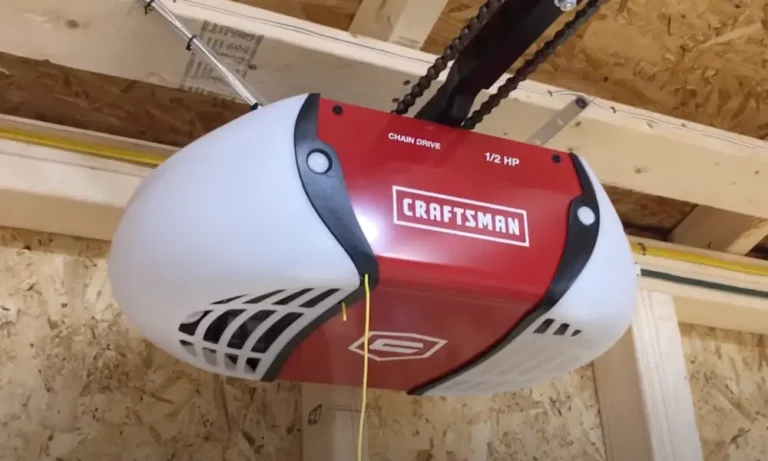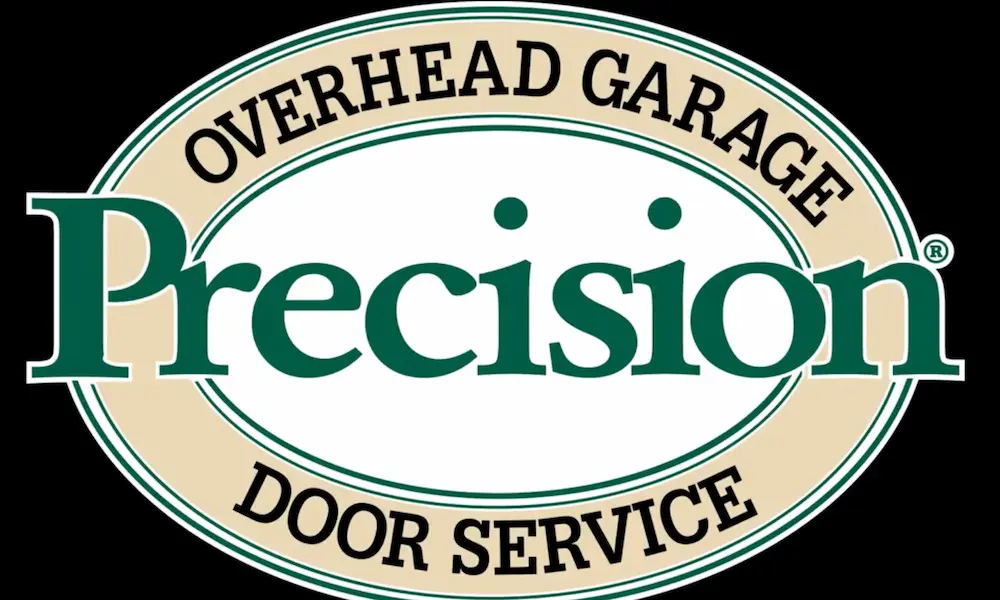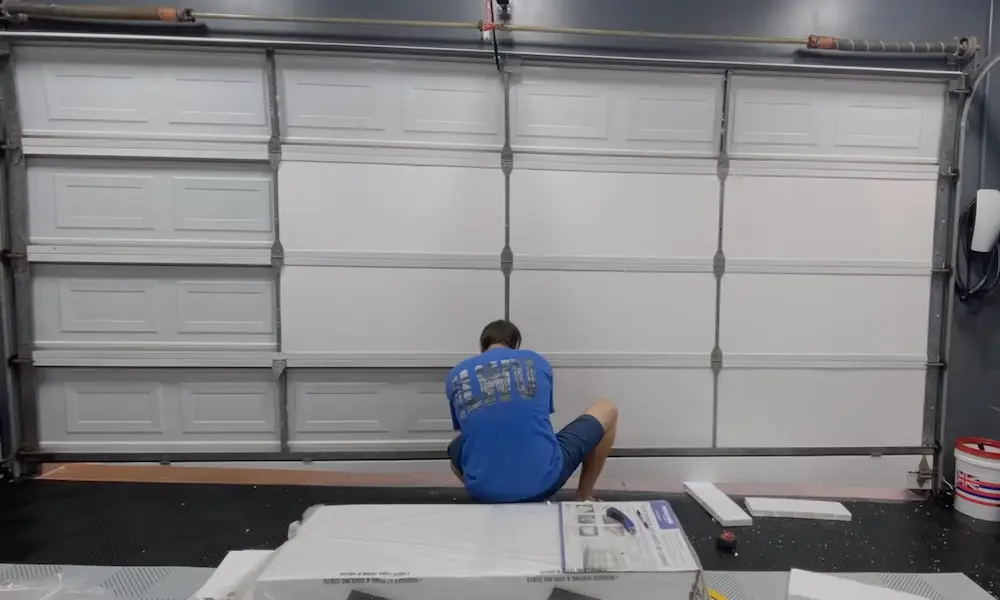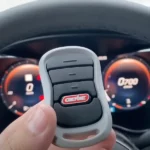Is your Craftsman garage door opener acting up? Whether it’s refusing to open, making strange noises, or stopping halfway, garage door opener problems can be frustrating. But before you call a professional, many common issues can be fixed with simple troubleshooting steps.
Power Supply Issues
Your Craftsman opener won’t work without power. It sounds obvious, but power problems are behind 92% of non-responsive units according to repair statistics.
Check the Power Source
First, make sure your opener is getting electricity:
- Check if the opener is plugged in securely
- Test the outlet with another device
- Check your circuit breaker for trips
- Look for a lit LED on the opener unit
If the outlet works for other devices but your opener remains dead, you might have internal power issues like a failed transformer or rectifier. These components typically require professional replacement due to high-voltage risks.
Safety Sensor Problems
Craftsman openers include safety sensors that prevent the door from closing if something’s in the way. When misaligned, they can cause frustrating door reversals.
How to Fix Misaligned Sensors
The sensors need precise alignment within a 3° tolerance to function properly. Here’s how to fix them:
- Look for LED indicator lights on both sensors – they should be steadily lit
- Clean both sensor lenses with a soft cloth and isopropyl alcohol
- Gently adjust the sensors until both LED lights are on
- Check for loose wires at sensor connections
- Make sure nothing blocks the beam path
Interestingly, spider webs cause 34% of sensor issues in rural installations, so quarterly cleaning is recommended for reliable operation.
Remote Control Not Working
Remote control problems are among the most common complaints with Craftsman openers. When your remote stops working, try these fixes.
Troubleshooting Remote Issues
- Replace the battery first (most common fix)
- Reprogram the remote to your opener
- Check for nearby interference from:
- LED lights
- Wi-Fi routers (keep antennas 4 feet away from openers)
- Other electronic devices
- Reset the opener by holding down the “learn” button
Research shows that the Security+ 2.0 remotes can experience memory issues after 500+ uses. If nothing works, you may need to resynchronize through a full system reset.
Strange Noises
Unusual sounds from your opener often indicate mechanical problems that need attention before they cause serious damage.
Identifying and Fixing Noisy Operation
| Noise Type | Likely Cause | Solution |
|---|---|---|
| Grinding | Worn gears or motor | Lubricate or replace gears |
| Rattling | Loose hardware | Tighten bolts and screws |
| Clicking | Chain/belt tension issues | Adjust tension |
| Squealing | Lack of lubrication | Apply recommended lubricant |
| Buzzing but not moving | Capacitor failure | Replace start capacitor |
The plastic drive gears account for 61% of chain/belt drive system failures. For long-term prevention, apply lithium-complex grease (NLGI #2) during biennial maintenance.
Door Reverses When Closing
If your door starts to close but then reverses, several issues could be at play.
Why Your Door Won’t Stay Closed
- Safety sensor issues: The most common cause, covered above
- Incorrect close force setting:
- Locate the close force adjustment screw or setting on your opener
- Adjust slightly to increase closing force
- Test after each small adjustment
- Track obstructions:
- Check the tracks for debris or bent sections
- Clear any obstructions
- Ensure tracks are properly aligned
- Limit switch problems:
- Adjust the down limit switch according to your model’s instructions
- Usually requires turning a screw or adjusting a setting on the opener unit
The safety system in your opener is designed to prevent door closure when it senses resistance. If adjusting the close force doesn’t help, the safety sensor system likely needs attention.
Door Only Opens or Closes Partially
When your door stops halfway, it usually indicates a travel limit problem or mechanical issue.
Fixing Partial Operation
- Check travel limits:
- Find the limit adjustment screws on your opener
- Adjust the up or down limit as needed
- Test operation after each adjustment
- Inspect mechanical components:
- Check for binding in the tracks
- Ensure rollers move freely
- Look for damage to the door panels
- Verify spring balance:
- Disconnect the opener (pull the emergency release)
- Manually lift the door to the halfway point
- The door should stay in place or move only slightly
A properly balanced door should maintain position when stopped halfway. If yours doesn’t, your springs may need adjustment, which is a job for professionals due to the high tension and potential for serious injury.
Motor Runs But Door Doesn’t Move
If you hear the motor running but the door stays put, you likely have a disconnected or broken drive component.
Reconnecting the Drive
- Check the trolley connection:
- Look for a disconnected trolley (the part that moves along the rail)
- Pull the emergency release rope and then reconnect it
- Ensure the trolley engages with the carriage
- Inspect for broken parts:
- Examine the chain, belt, or screw drive for damage
- Look for stripped gears in the opener
- Check if the coupler between motor and drive is intact
Plastic gear attrition is responsible for 61% of drive system failures. Regular lubrication every six months can prevent many of these mechanical failures.
Opener Lights Flashing
Flashing lights on your opener are diagnostic signals that can help identify the problem.
Understanding Light Codes
| Number of Flashes | Meaning | Solution |
|---|---|---|
| 1 flash | Remote programming mode | Normal during programming |
| 2 flashes | Sensor wire short/open | Check sensor wiring connections |
| 3 flashes | Control board issue | May require professional repair |
| 4 flashes | Sensors misaligned | Realign sensors as described above |
| 5 flashes | Motor overheated/RPM sensor | Let motor cool and check for obstructions |
| 6 flashes | Motor circuit failure | May require board replacement |
Check your specific model’s manual for exact diagnostic codes, as they can vary. Modern Craftsman models have more sophisticated diagnostic systems.
Intermittent Operation
If your opener works sometimes but not others, you’re likely dealing with electrical issues or interference.
Fixing Unpredictable Operation
- Check for electrical fluctuations:
- Consider installing a surge protector for the opener
- Look for loose wiring connections
- Eliminate interference sources:
- Keep Wi-Fi routers away from the opener
- Replace nearby LED bulbs with incandescent types
- Check for devices operating on similar frequencies
- Test wall button reliability:
- If the wall button works but remote doesn’t, focus on remote issues
- If neither works reliably, check wiring and circuit board
Field studies show that whole-house surge protection reduces control board replacements by 58%, making it a worthwhile investment for opener longevity.
Motor Running Slowly or Straining
A struggling motor suggests mechanical problems or an unbalanced door.
Easing Motor Strain
- Check door balance and springs:
- Disconnect opener and lift door manually
- Door should move easily and stay in place when stopped
- Poorly balanced doors create excessive strain
- Look for mechanical binding:
- Ensure tracks are aligned and clear
- Lubricate all moving parts
- Check for worn rollers or hinges
- Verify proper belt/chain tension:
- Too tight: creates drag and strain
- Too loose: causes slipping and jerky operation
Proper maintenance includes checking spring tension every two years. If your door requires more than 15 lb-ft of force to lift manually, your springs need professional adjustment or replacement.
Circuit Board Problems
The opener’s logic board is its brain, and when it fails, various problems can occur.
Addressing Electronic Issues
- Reset the opener:
- Unplug for 30 seconds, then reconnect
- Press the wall button to test operation
- Check for moisture or corrosion:
- Look for water damage or rust on the board
- Ensure the opener is properly protected from weather
- Inspect for burned components:
- Burn marks indicate electrical issues
- Swollen capacitors suggest failure
Modern Craftsman openers (post-2016) show vulnerability to logic board failures, with a 23% failure rate in the third year. Running above 45°C accelerates component degradation, so ensure proper ventilation around your opener.
Preventive Maintenance Tips
Regular maintenance prevents many common problems before they happen.
Keeping Your Opener Running Smoothly
- Monthly tasks:
- Test safety reversal system with an obstacle
- Clean safety sensors
- Listen for unusual noises during operation
- Bi-annual tasks:
- Tighten all hardware
- Lubricate chain/belt and moving parts
- Test manual operation
- Check remote battery
- Annual tasks:
- Inspect wiring for wear
- Check door balance
- Clean and grease tracks
- Test all safety features thoroughly
A comprehensive maintenance routine reduces opener problems by 76% according to field technician reports. The most critical maintenance items are sensor cleaning, gearbox lubrication, and door balance verification.
Smart Home Integration Issues
Newer Craftsman openers offer smart home connectivity, but this can introduce new problems.
Fixing Smart Features
- Wi-Fi connectivity issues:
- Ensure your opener is within good Wi-Fi range
- Check that your phone app is updated
- Verify compatible router settings
- Integration with other systems:
- Follow manufacturer pairing instructions carefully
- Some older models may need adapters for smart connectivity
- Restart all devices if communication fails
- Update firmware:
- Check for firmware updates for your opener
- Apply updates according to manufacturer instructions
Pre-2018 Craftsman models lack native smart home compatibility. For these units, aftermarket adapters may be required, though compatibility success is highest with firmware v2.3.7 or later in supported models.
















